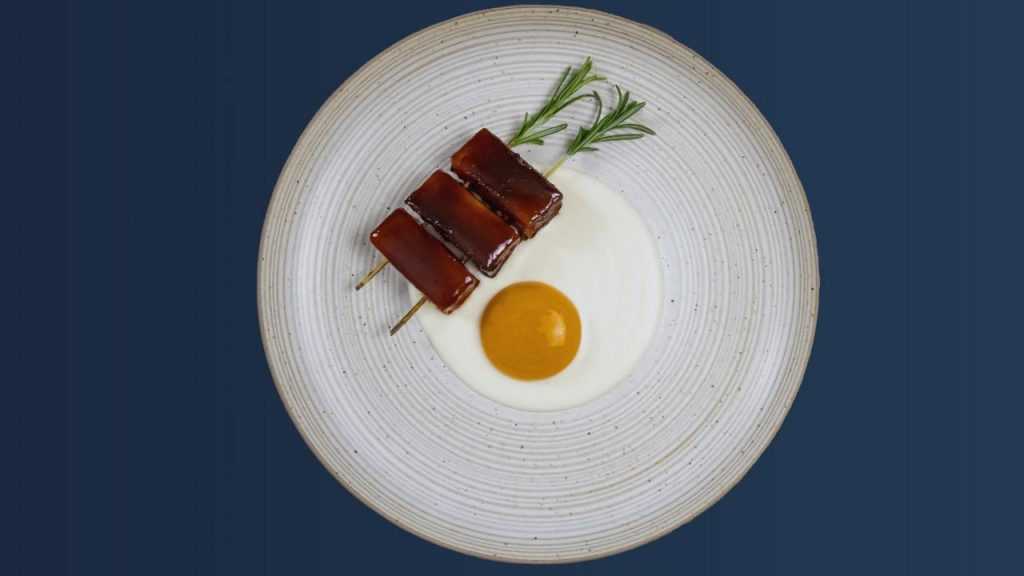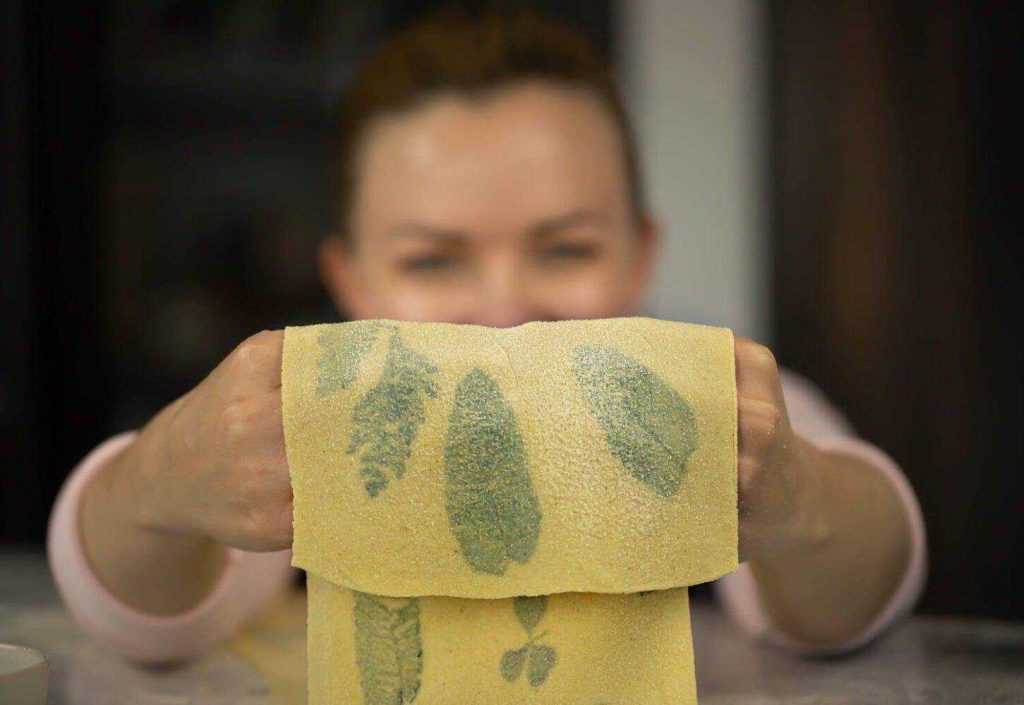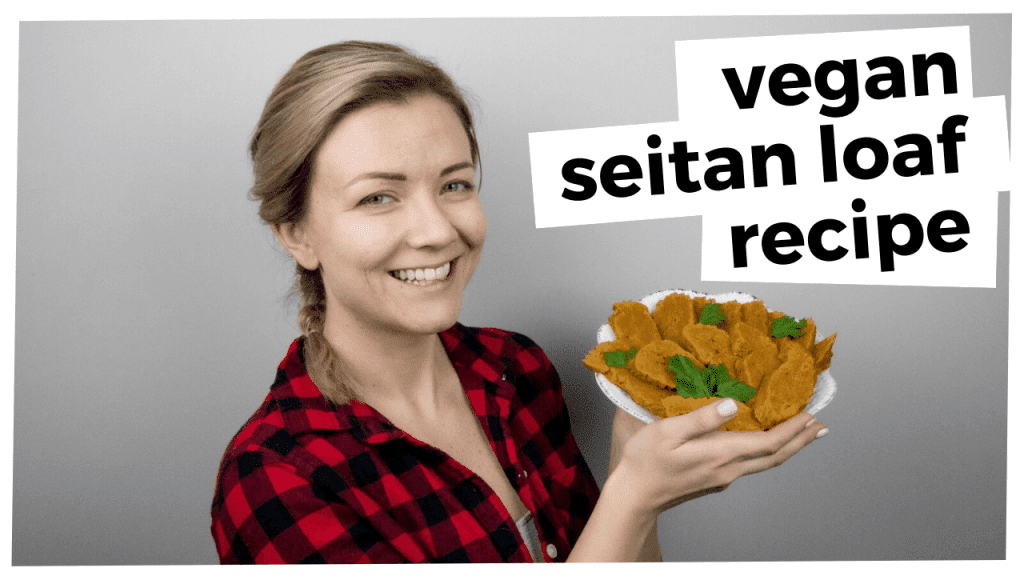Carob glazed vegetable Yakitori, Bechamel & burned pepper purée
Carob glazed vegetable Yakitori, Bechamel & burned pepper purée You probably think it’s an egg yolk and a glazed pork belly Yakitori. Well… it’s not. It’s actually just vegetables. Let me explain. This dish was inspired by 2021 S.Pellegrino Young Chefs competition, where the winner presented a totally vegetable focused dish. It’s about time, right? You can watch the full video of me making vegetable Yakitori here Part 1 – Vegan yolk 2 Orange bell peppers 1/4 tsp Turmeric powder 1/2 tsp MSG Calcium Lactate (3% of the final puree volume) 1g Sodium Alginate 200g Water Ingredients, you’ll need Directions Burn bell peppers on open fire. Peel the skin off and remove seeds. Discard. Use the hand blender to puree the burned bell peppers flash. Add in Turmeric powder and MSG and puree to smooth consistency. Measure the final puree amount, add in Calcium Lactate and blend for another 1-2 minutes. Use a piping bag or a basting syringe to transfer the puree into half-circle shaped silicon molds. Freeze. Meanwhile, prepare a Sodium Alginate bath by blending Sodium Alginate into water and letting it rest for 5-10 min. Prepare 2 more clear water baths. Perform reverse spherification by placing the frozen pepper puree into the Sodium Alginate bath. Transfer the spherified vegan yolk into a water bath to clean off any extra Sodium Alginate and finally transfer to the final water bath for keeping purposes. Part 2 – Plant-based Bechamel sauce 1L unsweetened Plant-based milk of your choice 1 Onion 4 Cloves 2 Bay leafs 30g AP flour 30g Vegetable oil Ingredients Directions Infuse milk with onion, cloves and bay leafs and strain through a cheesecloth. Make a white roux with flour and oil. Incorporate infused milk into the roux 1 ladle at a time. Simmer for about 20 min, until the Nappe consistency. Strain through the cheese cloth again and season. Part 3 – Vegetable Yakitori small Pumpkin Large carrots Large parsnip 30g Carob syrup 30g Scotch 50g Brown sugar 50g Dark miso paste 20g Soy sauce 100g Water 10g Mustard 3 large fresh Rosemary sprig Ingredients Directions Burn the above vegetables (or other vegetables of your choice) on open fire. Remove the burned skins and seeds. Discard them. Cut the vegetables into precise and equal size rectangles. Blend all the other ingredients (except for Rosemary). Put a frying pan on heat, pour in the carob glaze liquid. When the glaze gets hot, add in 1 sprig of Rosemary, carrots and parsnips (the harder vegetables). Cook and baste vegetables, until they are nearly done. Add in the pumpkin cuts. Repeat the procedure until all the veggies are done. Remove the glazed veggies from the pan. Plant the charred and glazed vegetables on 2 fresh Rosemary sprigs. Vegetable Yakitori is ready. Part 4 – Vegetable Yakitory assembly Pour 2 tbsp plant-based Bechamel sauce on a warm plate. Place a vegan egg yolk inside the Bechamel sauce. Place the vegetable Yakitory on the side of the vegan “fried eggs”, a.k.a. Bechamel sauce and charred bell pepper puree. Enjoy!
Carob glazed vegetable Yakitori, Bechamel & burned pepper purée Read More »


